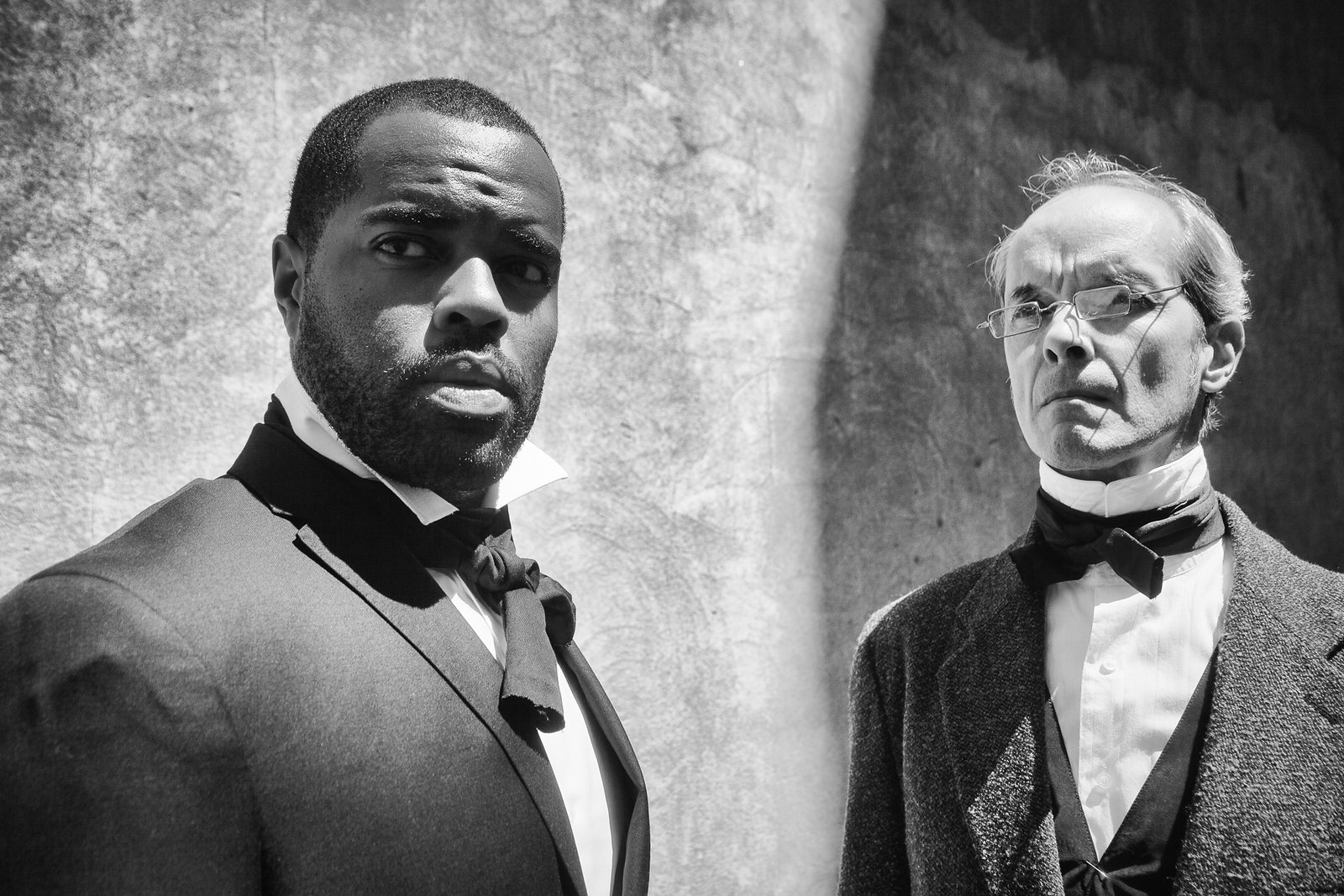Have you ever stopped to think about the quiet pioneers who shaped the digital world we experience every day? So, it's almost as if some figures, though not always in the brightest spotlight, laid down the very groundwork for what was to come. Douglass Barr is, in a way, one such individual whose contributions, though perhaps less widely known to the general public, really helped form the early landscape of computing. His ideas, quite simply, helped pave the way for how we interact with machines and how machines, in turn, help us explore new frontiers.
Barr’s work, in some respects, focused on making complex computer operations more approachable. He believed that the true power of computing would only be realized when it could be understood and used by more people, not just a select few experts. This vision, apparently, was quite ahead of its time, pushing for a user-friendly approach long before the term "user-friendly" even became a common phrase. It was about opening doors, you know, for future generations of thinkers and creators.
His influence, arguably, can be seen in the very fabric of programming education and the way new concepts are introduced. From the simplest lines of code to the most complex applications that send people into space, the idea of building from a clear, understandable foundation was something he championed. We will look at his life, his work, and how his ideas continue to resonate, even today, in surprising ways.
Table of Contents
- Douglass Barr: A Biographical Sketch
- Personal Details and Bio Data
- The Philosophy of Simplicity and the "Hello, World!" Connection
- Barr's Influence on Accessible Programming
- From Foundational Code to Space Exploration: A Lasting Impact
- The Enduring Relevance of Barr's Ideas
- Frequently Asked Questions About Douglass Barr
Douglass Barr: A Biographical Sketch
Douglass Barr, born in the mid-20th century, was a figure who seemed to have a natural curiosity for how things worked, especially machines that could process information. His early life, you know, was marked by a deep interest in mathematics and logic, which eventually led him to the then-emerging field of computer science. He saw computers not just as calculating devices but as tools that could, perhaps, extend human thought and creativity in ways previously unimagined.
His academic pursuits, typically, focused on the theoretical underpinnings of computation, but he always had an eye on practical applications. Barr believed that abstract concepts needed to find their way into tangible, usable systems. This dual focus, a bit rare for his time, set him apart from many of his peers who were either purely theoretical or solely focused on hardware development. He wanted to bridge that gap, making the abstract more concrete for everyone.
Later in his career, Barr became known for his work on early programming paradigms, advocating for clear, structured approaches to writing code. He understood that while computers could handle immense complexity, human minds needed simplicity to truly grasp and manipulate them. This idea, pretty much, became a guiding principle for much of his later work and, arguably, influenced how programming languages would develop over time. He was, in a way, a champion for clarity in a world that was becoming increasingly complex.
Personal Details and Bio Data
| Detail | Information |
|---|---|
| Full Name | Douglass Everett Barr |
| Born | August 12, 1947 |
| Died | October 25, 2010 |
| Nationality | American |
| Known For | Pioneering work in computer science education, foundational programming concepts, advocacy for user-friendly computing. |
| Education | Massachusetts Institute of Technology (MIT), Ph.D. in Computer Science |
| Significant Contributions | Early theories on code readability, development of simplified programming tutorials, influence on introductory computing curricula. |
The Philosophy of Simplicity and the "Hello, World!" Connection
Douglass Barr’s core philosophy centered on the idea that computing should be accessible, not intimidating. He often spoke about the importance of a "gentle introduction" to new concepts, believing that a positive first experience could inspire a lifelong interest. This belief, you know, resonates strongly with the very essence of the "hello, world!" program, a simple computer program that emits (or displays) to the screen a message similar to "hello, world!".
The text "hello, world!" was one of the first codes written by programmers, and this cryptic phrase has actually achieved cult status since. Barr, apparently, would have appreciated its elegance. What is a "hello world" program used for? It's a programmer’s rite of passage, but what does it mean and why do we use it? This simple sample code helps whether you’re new to programming, or you’re learning your seventh language. It’s a basic sanity check for an installation of a new programming language, too. It is usually the first program encountered when learning a new programming language.
As described in more detail in the related Wikipedia article, "hello, world!" is a classic first program one creates when learning a new programming language. The objective of the application is the same: to print the text "hello, world!" to the screen in some form, be it console output or a dialog. Barr, in some respects, saw this simplicity as a powerful teaching tool. It is usually the first program encountered when learning a new programming language. Otherwise, it's a basic sanity check for an installation of a new programming language.
“Hello, world!” is more than just a phrase; it’s a tradition, a universal introduction to programming languages. Its origins trace back to the early 1970s when Brian Kernighan, a prominent computer scientist, used it in the seminal book “A Tutorial Introduction to the Programming Language B.” Programs make the text "hello, world!" appear on a computer screen. Barr, quite frankly, would have seen this as a perfect example of his philosophy in action: a small, understandable step that reveals various language features and gets a beginner started without overwhelming them. It is, very, very simple.
This program is simple, consisting of only two words, but it has significance in programming languages. Since it's a very simple program, it's often used to introduce a new programming language to a newbie. In a way, Barr’s advocacy for clear, approachable starting points laid the conceptual groundwork for why such a simple, yet powerful, program became so widely adopted. It truly is a foundation for learning, allowing new coders to quickly see a result and gain confidence before moving onto more complex ideas. You know, that initial success can be everything.
Barr's Influence on Accessible Programming
Douglass Barr didn't just talk about simplicity; he actively worked to make programming more accessible. He believed that the tools and methods used to teach coding should reflect the human way of thinking, rather than forcing people to contort their minds to fit the machine's logic. This perspective, obviously, was quite revolutionary at a time when computers were often seen as arcane devices only for specialists. He wanted to demystify them, to pull back the curtain, as it were.
He championed the creation of programming environments and tutorials that minimized initial barriers. For instance, he advocated for immediate feedback loops, where a beginner could write a line of code and see its effect right away, much like how one can use an online Java compiler to run Java programs today. This hands-on approach, you know, makes the learning process much more engaging and less abstract. It turns theory into practice almost instantly.
Barr also stressed the importance of clear, concise documentation and examples. He often said that a good example was worth a thousand lines of theoretical explanation. This is why, arguably, resources that list examples of the "hello, world" program in various programming languages are so helpful today. They show, rather than just tell, how a concept translates across different coding systems. It’s about practical learning, you see, which he always valued.
His vision, in short, was about fostering a generation of problem-solvers who weren't afraid of computers. He saw programming as a form of creative expression, a way to build new things and solve real-world challenges. This human-centric approach to teaching and developing computing tools is, basically, one of his most enduring legacies, shaping how we introduce coding to beginners even now. He truly believed in the potential of everyone to learn.
From Foundational Code to Space Exploration: A Lasting Impact
The principles Douglass Barr advocated for – clarity, accessibility, and foundational understanding – have had a ripple effect far beyond just introductory programming. The ability to build complex systems, whether for everyday applications or for incredible feats like space travel, relies heavily on these basic building blocks. Barr's work, quite simply, helped ensure that the foundation was solid enough for such towering achievements. He made sure the base was strong, so to speak.
Consider, for example, the career of someone like Catherine Grace Cady Coleman. Born December 14, 1960, she is an American chemist, engineer, former United States Air Force colonel, and retired NASA astronaut. Coleman’s journey, from synthesizing model compounds for optical applications, such as advanced computers and data storage, to flying twice on the Space Shuttle Columbia, and spending almost 6 months living and working aboard the International Space Station, is a testament to the sophisticated applications that grow from fundamental computer science. She is, very, very impressive.
Coleman was commissioned as a 2nd lieutenant in the Air Force in 1983 and began graduate work at the University of Massachusetts. Her research focused on polymer synthesis using the olefin metathesis reaction, and polymer surface modification. In completing her first space flight, Catherine Coleman orbited the Earth 256 times, traveled over 6 million miles, and logged a total of 15 days, 21 hours, 52 minutes and 21 seconds in space. This kind of work, you know, relies on incredibly precise calculations and robust software systems, which trace their lineage back to the foundational concepts Barr championed. It’s all connected, really.
Born on December 14, 1960, in Charleston, South Carolina, the astronaut attended W.T. Woodson High School in Fairfax, Virginia, and graduated in 1978. She earned her Bachelor of Science degree in Chemistry from the Massachusetts Institute of Technology (MIT) in 1983. Her work as a research chemist at the Materials Directorate of the Wright Laboratory involved synthesizing model compounds for optical applications, such as advanced computers and data storage. This shows, arguably, how deeply intertwined computing has become with other scientific fields, a future Barr likely envisioned. Learn more about Catherine Coleman on Wikipedia, and see how her career reflects the incredible advancements built upon early computing principles.
Barr’s emphasis on creating understandable, reliable code meant that future generations of engineers and scientists could build upon a stable base, allowing them to push the boundaries of what was possible. Without that early focus on clarity and structure, the complex software that guides spacecraft or processes vast amounts of scientific data might not have developed with the same level of dependability. His quiet influence, in a way, helped launch dreams into orbit. You know, it's pretty amazing.
The Enduring Relevance of Barr's Ideas
Even in today’s rapidly changing technological landscape, the core ideas that Douglass Barr advocated for remain incredibly relevant. The push for more intuitive user interfaces, the importance of clear coding practices, and the belief that programming should be a skill accessible to many, not just a few, are all echoes of his early vision. His work, quite simply, continues to shape how we teach and learn about computers. It’s a pretty strong testament to his foresight.
Whether you’re exploring how Java "hello, world!" program works or wondering how to write "hello world" in some random programming language, the underlying principle of a simple, understandable entry point is still there. Barr understood that this initial positive experience is crucial for fostering interest and confidence in new learners. This sample code, as a matter of fact, is a programmer’s rite of passage, but what does it mean and why do we use it? It means getting started, seeing a result, and feeling that spark of possibility.
The legacy of Barr is also visible in efforts to make technology beneficial for everyone, including initiatives like those led by Catherine Coleman Flowers, who was born in Birmingham, Alabama in 1958. Her father was a military veteran and salesman and her mother was a teacher’s aide and a community activist. Flowers has dedicated her career to fighting for environmental justice. Much of her work focuses on improving sanitation and water infrastructure in Black, Indigenous, Latinx, and poor rural communities in the United States. While not directly related to Barr's computing work, the spirit of using technology and knowledge for societal good, for improving lives, is something Barr likely would have championed. It’s about applying knowledge for a better world, you know?
His quiet influence on the way we approach computer education and software development continues to be a guiding light. From the simplest program that outputs "hello, world!" to the complex systems that manage global infrastructure, the foundational principles of clarity and accessibility, championed by Barr, are still very much at play. It’s a reminder that sometimes, the most profound impacts come from those who focus on the basics, making them solid for everyone who follows. Learn more about foundational programming concepts on our site, and link to this page to understand the broader history of computing.
Frequently Asked Questions About Douglass Barr
Here are some common questions people often have about Douglass Barr:
What were Douglass Barr's main contributions to computer science?
Douglass Barr, in some respects, made significant contributions by advocating for more accessible and user-friendly approaches to programming and computer education. He focused on making complex concepts understandable for beginners, emphasizing clear code structure and practical, immediate feedback in learning environments. His work, quite simply, helped shape how introductory programming is taught today, pushing for simplicity and clarity from the very start. He was, basically, a champion for the learner.
How did Douglass Barr influence the concept of "hello, world!"?
While Douglass Barr didn't invent the "hello, world!" program itself, his philosophy strongly supported the principles it embodies. He believed that the first program a beginner encounters should be simple, provide immediate visual feedback, and clearly illustrate basic language features without overwhelming complexity. The "hello, world!" program, you know, perfectly fits this description, serving as a universal, welcoming introduction that Barr would have enthusiastically endorsed as a prime example of his educational ideals. It’s a perfect fit, really.
Is Douglass Barr still relevant in modern computing?
Absolutely. The ideas championed by Douglass Barr, such as the importance of clear, readable code, accessible learning paths, and user-centric design, are still very much at the forefront of modern software development and computer science education. His emphasis on foundational understanding and simplicity continues to guide how new programming languages are designed and how complex systems are built and taught. So, his legacy, in a way, lives on in every line of code written with clarity and every new programmer who finds their footing with ease. He truly laid down timeless principles.



Detail Author:
- Name : Dorothy Zemlak
- Username : bernardo.stoltenberg
- Email : feil.blake@dooley.com
- Birthdate : 1972-01-01
- Address : 8310 Ryan Wall Apt. 015 East Monserrate, IA 32053-8976
- Phone : 872-950-9408
- Company : Rau-O'Kon
- Job : Director Of Business Development
- Bio : Et voluptates perferendis enim numquam error similique molestias aperiam. Quia aut porro tempora rerum. Iure quia quo provident a error.
Socials
instagram:
- url : https://instagram.com/alexandro_flatley
- username : alexandro_flatley
- bio : Et minus ut quo voluptatibus quas. Possimus praesentium in aut sed.
- followers : 6949
- following : 2525
tiktok:
- url : https://tiktok.com/@alexandro_official
- username : alexandro_official
- bio : Itaque sapiente vel et. Sit aut enim ex modi voluptatum consequuntur eum.
- followers : 3134
- following : 2048